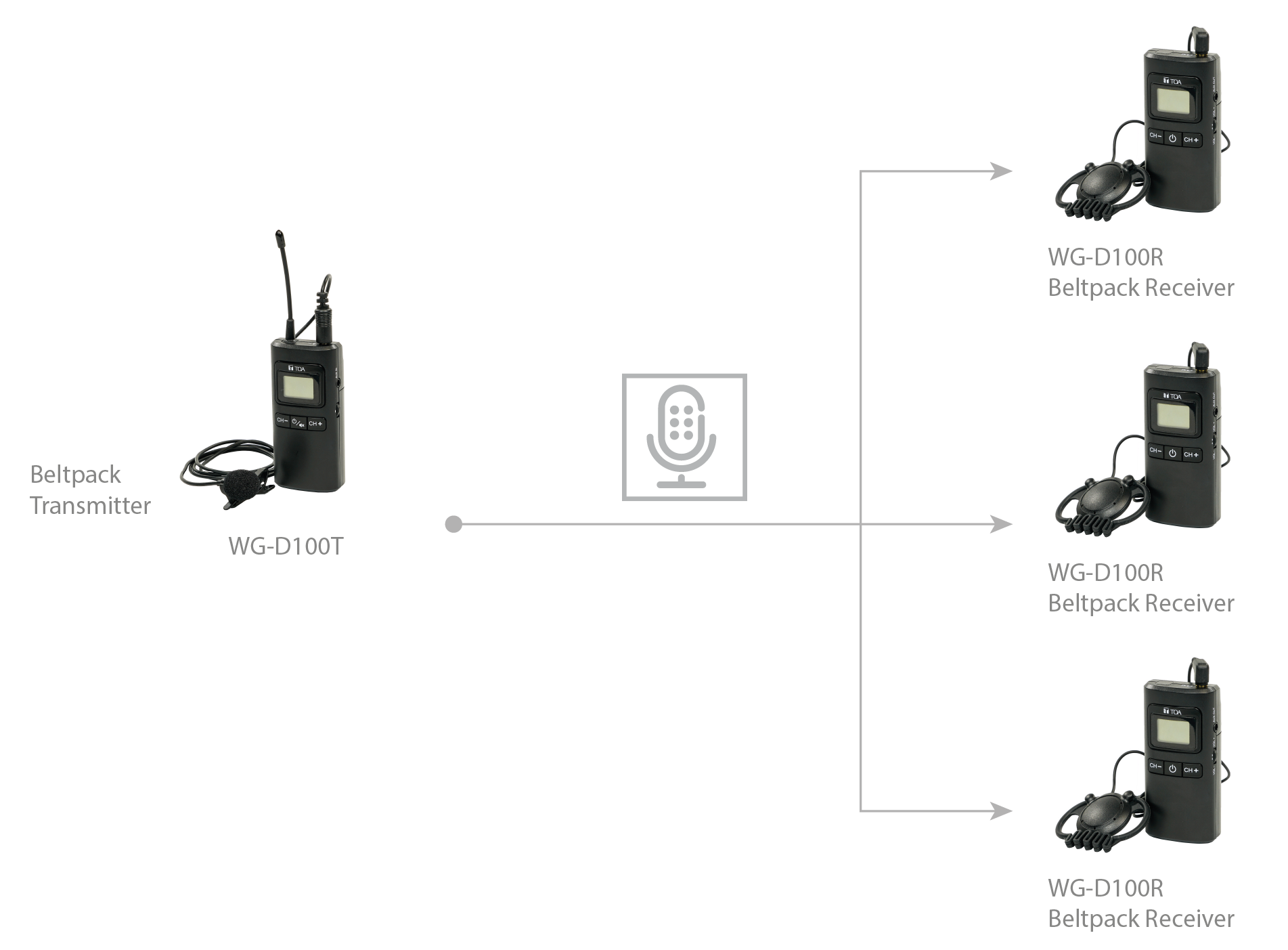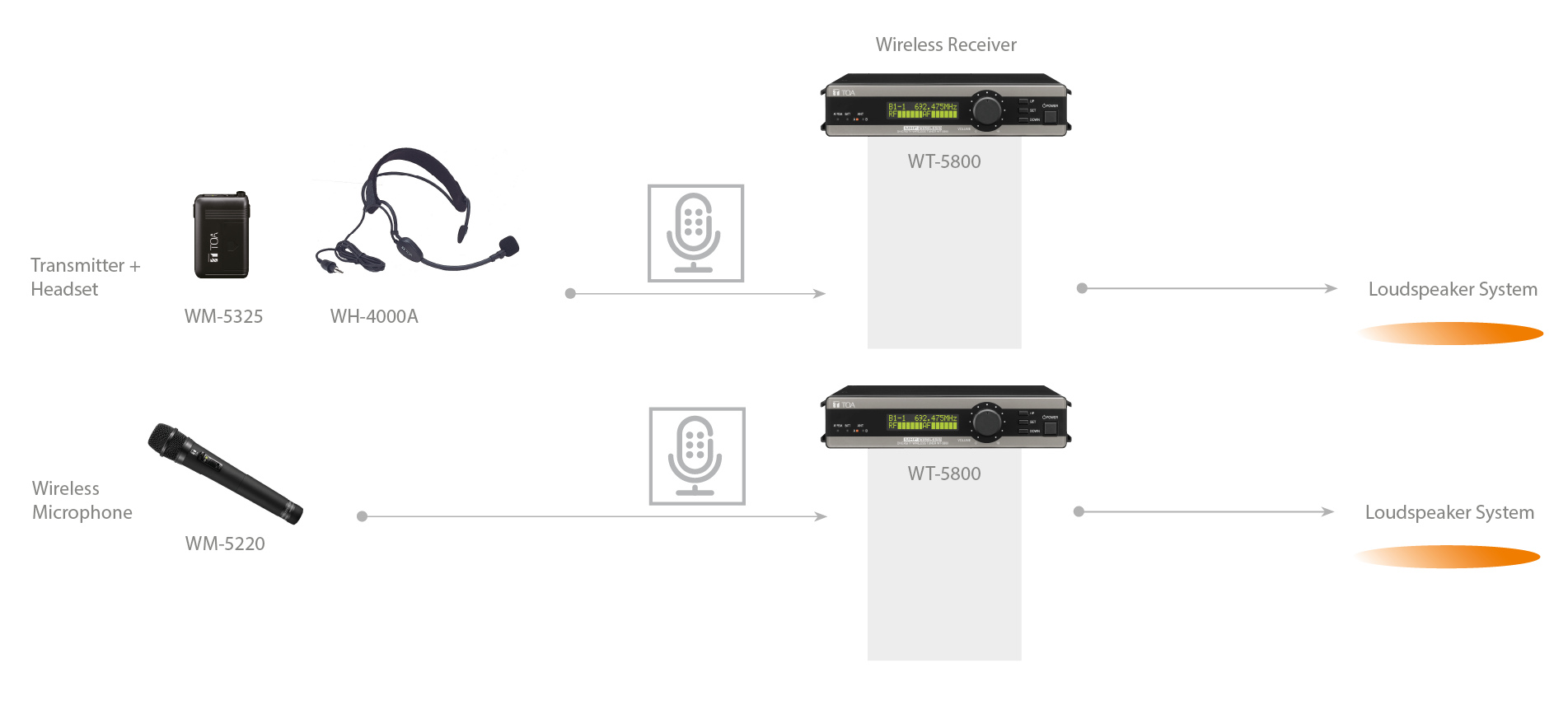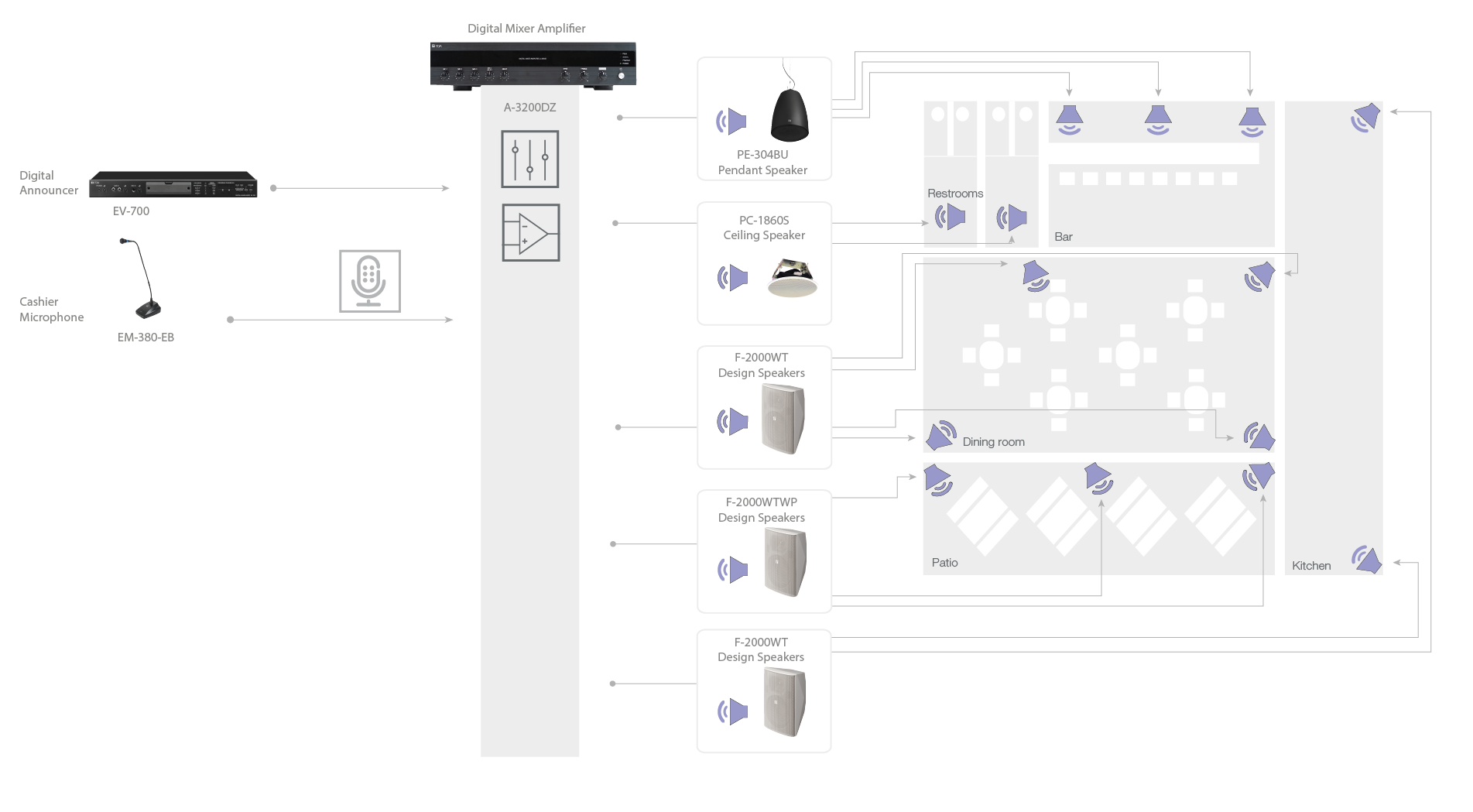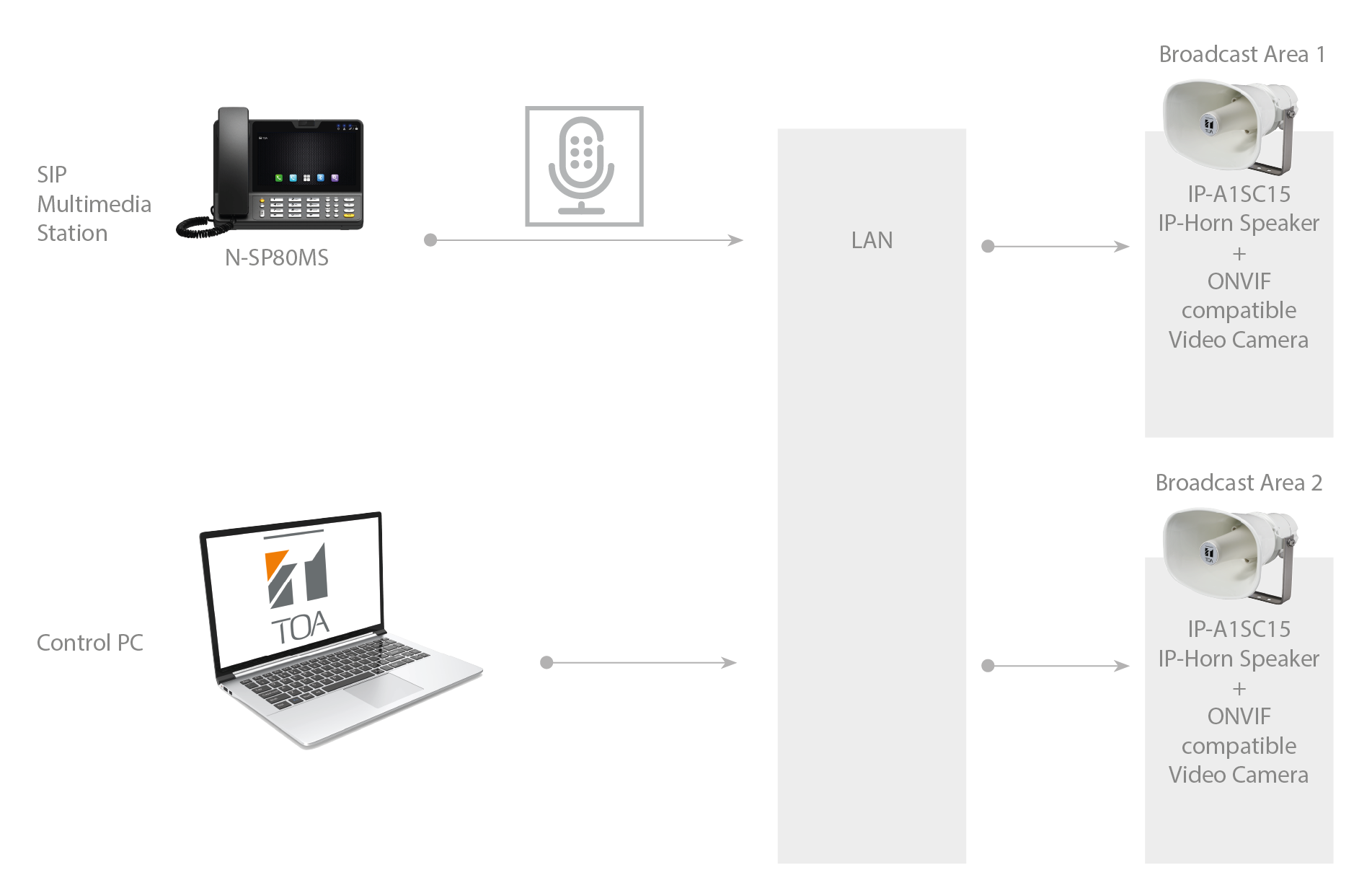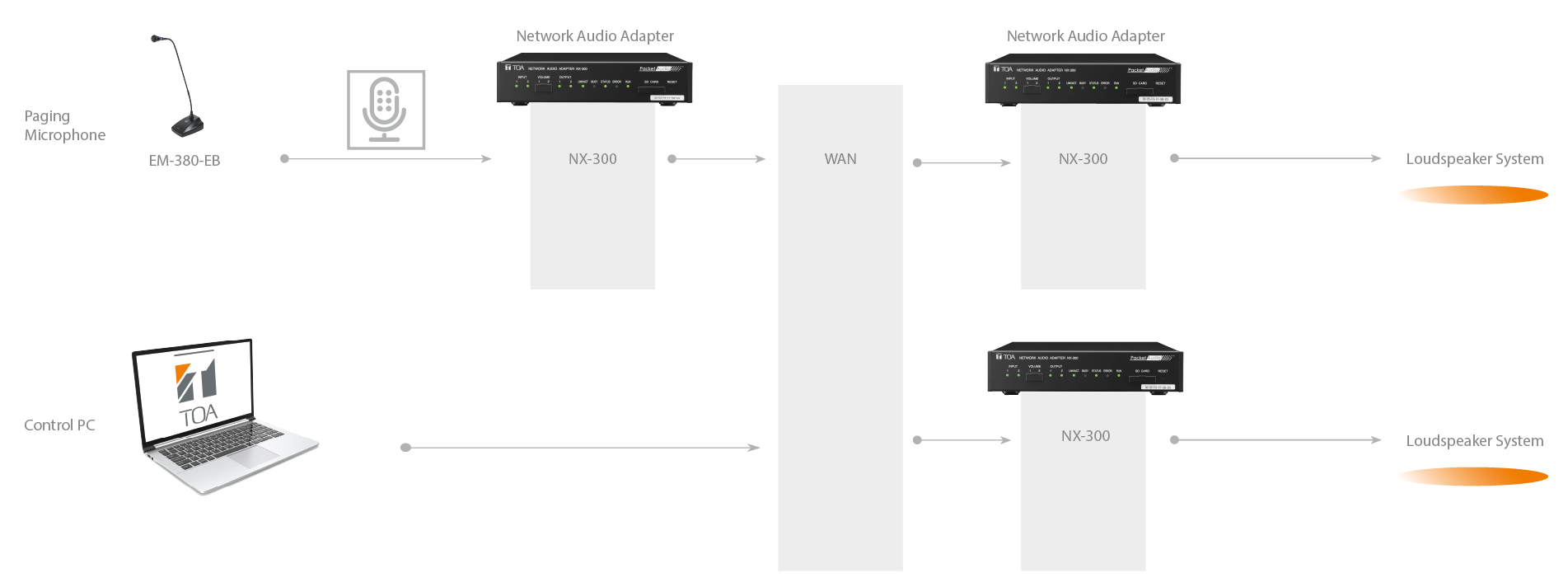Service : Paging System : TOA Brand Paging System
INFORMATION - Public Address (PA) Systems
TOA is a Specialist in PA Equipment Manufacture. In the early days of 1939, TOA developed the first "TOA Portable Amplifier" combining an amplifier, microphone, speaker and other components in one single unit. In 1954 TOA developed the world's first electric megaphone - a stand-alone PA system - offering clear sound over long distances.
Compact stand-alone PA system - MEGAPHONE
The smallest stand-alone public address system is a megaphone, combining microphone, amplifier, power source and speaker in one single unit.
The world's first electric megaphone was developed by TOA in 1954. Today our megaphones offer stylish designs with powerful outputs for effective communication for various applications in environments as schools, government facilities, factories or sport events. All models incorporate anti-bacterial treatment and include splash-resistant types as well as high-performance shoulder types.
Mobile In-Ear Broadcasts – WIRELESS TOUR GUIDE SYSTEMS
Why using a public loudspeaker, if you want to keep your audience private? When you are a tour guide, you probably don’t want any passenger to pick up the information that others paid for. Using the WG-D100 Wireless Tour Guide System, you have one receiver for every participant who can individually control the volume of his headphones. Moreover, you may choose from different channels for multi-lingual guidance. The speaker may use a lavalier microphone or a headset for optimum speech intelligibility.
With a coverage range of up to 150 m outdoor and unlimited number of receivers, you can get yourself heard without the need for amplifying your voice to externals. This makes it optimal solutions for silent environments as museums.
Live Presentations & Workshops – WIRELESS SYSTEMS
Everyone who once joined a seminar knows the importance of gestures and movement of the speaker for the liveliness and quality of the presentation. Not to mention the importance of good voice quality. Both can be achieved using our WM-5000 Wireless Microphone Systems. While handheld microphones may be used in religious processions, bodypacks with headset microphones are best choice for fitness trainers, speaking to an audience while in the move.
When security of information is your main focus, you may chose WM-D5000 series for its digital encryption and enhanced interference immunity.
For both series there are small receivers that feed into the sound system of your choice. You may even install the receivers into transportable, battery-powered loudspeaker systems for maximised mobility!
Small Stationary Installations - 100 V SYSTEMS
The concept of 100 V audio transformation is a proven technology for distributing audio signals to loudspeakers up to several hundreds of meters away from the amplifier. Thus, it makes it the standard for distribution audio in larger buildings, which can be separated into individual zones. The wattage and number of zones is the main selection feature from Digital Mixer Amplifier A-2000D for one zone only up to five separate zones supplied by A-3200DZ
Choosing loudspeakers highly depends on the rooms you need to sound. For smaller indoor rooms, you may chose BS-678 Box Speakers or PC-1860 ceiling speakers. For outdoor areas, F-2000WTWP would be preferred.
You still need a microphone to pick up your voice for all systems. The EM 380-EB Paging Microphone is a simple solution for most environments. But you can deal with any type of special requirements using matching microphones, of course, as DM-524B or PM-222 for rough environments. Or you don’t have to speak at all – using EV-700 Digital Announcer for timer-controlled pre-recorded messages.
Medium to Large Combined, high-functional installations – VOICE ALARM SYSTEMS
Choosing a Voice Alarm system is a safe bet for all large scale announcements in more than five zones. But they also have their appeal for smaller projects, since they come with programmable remote microphones, integrated audio player for pre-recorded messages and amplifiers in one compact device. Besides, the certification to the EN 54-16 standard offering highest level of security including solutions for backup in case of power loss.
Our VM-3000 is a low-cost solution for small to medium sized applications as schools, small to medium sized shopping centres, hotels or restaurants with up to 60 zones. The compact design and easy installation enable an intuitive and user-friendly configuration through a dedicated PC-Software.
Our state-of-the-art VX-3000 system combines the best of all systems. The smallest system consisting of just one frame is already an all-in one PA, with integrated timer and audio player for up to 1024 files. Fully IP-based, it can be scaled up to the maximum and can combine various buildings of a single complex. You may tailor all aspects of broadcasting according to your needs using the full set of options offered by the software. A maintenance interface allows a quick troubleshooting in even most complex systems.
Flexible System Integrations - SIP ACTIVE LOUDSPEAKER SYSTEMS
In case you have just small broadcast areas that can be covered by a single loudspeaker, then the Active Horn Speaker IP-A1SC15 is the solution Its integrated amplifier makes it independent from other equipment. Furthermore, audio transmission is performed via network, so you don’t need to supply a separate 100 V cable.
This makes the installation and usage very flexible: Each speaker can be addressed individually. Integration into telephone or video surveillance systems may be performed via the widely accepted SIP protocol, amongst others supported protocols.
You may use our N-SP80 SIP Telephone Station for direct announcements.
Wide Area Broadcasts – NETWORK AUDIO SYSTEMS
So, you have a really wide area to control your Public Announcements in? Maybe even connected only over the internet? Then you need the NX-300 Network Audio Adapter. It combines different, local PA substations in a simple-to-use setup. Controlled by PC or automated over contact interface, you can send audio as well as control messages to your far away dependencies. The customizable, User-friendly GUI allows full software control and monitoring of system status.
Measuring Intelligibility
Crystal clear announcements easy to understand
The most common way of expressing speech intelligibility is the ‘Speech Transmission Index’ (STI), which uses a scale from 0 to 1. Under the European standards applicable in many countries, EN 60849 (to be replaced by EN 50849) or TS 54-32, the minimum value prescribed for electroacoustic emergency notification systems is an STI of 0.5.
Speech Transmission Index (STI) Values
STI value
- 0.00 – 0.30 poor
- 0.30 – 0.45 weak
- 0.45 – 0.60 fair
- 0.60 – 0.75 good
- 0.75 – 1.00 excellent
General system structure information
Public address systems are usually mono. They typically distribute one or more audio signals into different areas that we call zones. The type of audio signal can either be background music, manual or automatic announcements, or signal tones (gongs, alarm tones). The audio signals are normally not mixed. An audio signal is transmitted into one or more defined zones.
Priorities are assigned to avoid the inadvertent merging of different audio signals, e.g. if multiple announcements are to be broadcast in the same zone at the same time. Most PA systems work using high-impedance loudspeakers.
Central PA system
For a central PA system, the speakers are all installed in the same location, e.g. in the middle of a hall‘s ceiling.
Frontal PA system
If the sound is accompanying an optical event, the sound should also be originating from the direction of this event. The viewer becomes irritated if the sound comes from another direction. In most cases, such an event takes place at the front of the room, for instance on the stage. The loudspeakers are usually positioned to the left and right of the event. The loudspeakers should also be mounted high enough that the sound pressure is not too high in the vicinity of the listeners, not least to prevent the audience’s hearing from being damaged.
If the room in question is deep, loudspeakers can be installed along the wall or ceiling (‘delay line’) to support the front PA system. In order to ensure that the frontal signal remains intelligible, these speakers should reproduce sound with a delay (adjusted individually, depending on the distance from the frontal system). This gives the impression that the sound is coming directly from the stage. The delay can be calculated using the following formula: T = d / 340 + 0.01 s
T: Time of delay (s)
d: Difference in distance from the listener front loudspeakers/delay loudspeakers (m)
Decentralized PA system
If no support is required for directional staging, or in large spaces with low ceilings (e.g. supermarkets), installing a frontal PA system is not useful. In such cases, it is better to go with a decentralised PA system in which the loudspeakers are installed where they are needed.
The ceiling loudspeakers should be distributed evenly over the PA system’s effective area, generally with the same spacing between all the loudspeakers. The required degree of intelligibility is an important parameter in planning such a PA system. This depends on several factors:
- Ceiling height
- Loudspeaker coverage angle
- Type of use (quality of sound)
The higher it is possible to mount the loudspeakers, the greater the effective range of the loudspeaker and therefore also the acoustic range at ear height (ear height ≈ 1.5 m above the floor), yet the sound pressure is lower than would be the case for a lower installation.
For good intelligibility, the frequency response of the system should be able to reproduce signals of up to 6 kHz at every point in the audience area. Acceptable intelligibility is assured at a frequency response of up to 4 kHz. This value should be ignored in the case of background music, since background music is not a matter of intelligibility.





